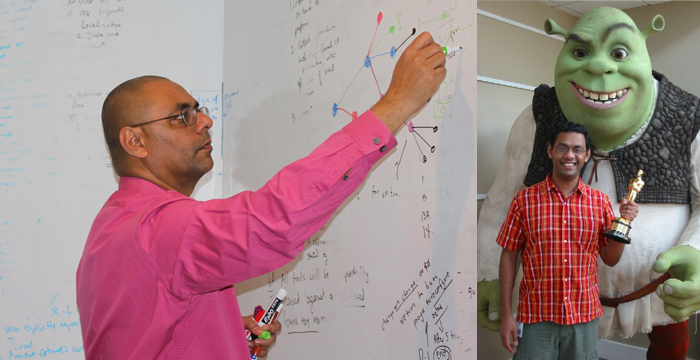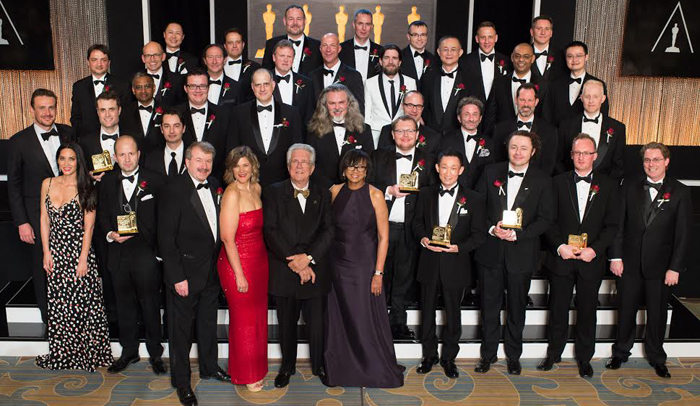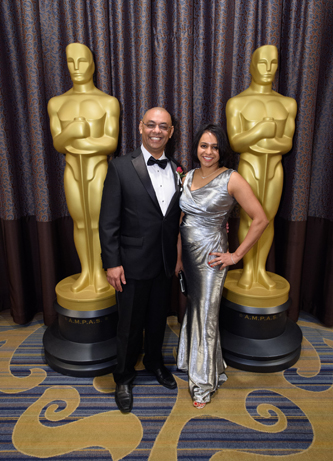Antz, Shrek, Madagascar, Kung Fu Panda… all these movies have a common thread among them. Yes, they all are animated films but at the same time, all have come out of DreamWorks Animation, the studio that’s among the top studios that’s been producing animated films and has delivered many blockbuster movies. The big question is: what does it take to create a movie? A single animated feature film takes about three to four years to get developed and a lot of effort goes into making it. And the process, is definitely not easy.
Earlier if one had to produce an animated feature film, traditional hand drawn animation techniques were resorted to but the effort was long drawn, and required oodles of investment both in terms of time and money. Today even though the process remains the same continuous technological innovation has resulted in a smoother process with time being saved, courtesy software and efficient hardware.
And among the many notable technicians and software developers is Rahul Thakkar who has worked with PDI/DreamWorks and developed the Media Review System, display calibration and colour pipeline software, high performance particle renderer along with an additional 10 to 20 tools to help artists in their daily workflow.
He’s the man behind developing the DreamWorks Animation Media Review System back in 1997 and though his contribution has been recognised by the animation industry, it is now that the Academy Award which has honoured him for his valuable work during the Oscars’ annual Scientific and Technical Awards Presentation Ceremony.

We got in touch with Rahul via Skype to understand the software he has developed, its importance and the challenges that he had to go through back in time.
Rahul believes the Media Review System has a very crucial role to play in any animation project. “Any technology used for making a feature length animated film or a VFX heavy film is of no consequence to the audience goer,” he says. “That said, good technology always plays a significant role in DreamWorks animated features. It simplifies the life of an artist so they can do more. It provided controls and experiences to the artist that enables him to create an audio-visual experience never seen before.”
It was back in 1996 that Rahul joined PDI (Pacific Data Images) which was later acquired by DreamWorks Animation in 2000 (and got closed in 2015). At that time, the team which consisted of merely 60 people, was figuring out how to create an animated feature film, Antz and that’s when the need for the Media Review System arose and Rahul’s quest to create something from scratch began. With the help of Richard Chuang (his advisor and mentor), Richard created the first version of the review system.
After working about 80 hours a week for about six to eight months, the first version of the review system was rolled out in 1997. This was at a time when there were no precedents to the software and CGI animation had just begun taking shape. Rahul developed the Media Review System in C and C++ language using an SGI computer as it was one of the cheapest machines in the market. Version 2.0 came in June 1998.
There was another challenging task in front of him. PDI / DreamWorks also had to create its own pipeline as it didn’t have one to which Rahul elaborates, “We had to come up with a whole bunch of software. There were certain questions like ‘How to make editing system for anyone that can be accessed anytime? How to make UI without using keywords or mouse? How can we have seamless connections, without switching from monitors? How to synchronise audio and visual? How do you shuttle between clips as they had to go frame by frame?’ These were the main issues and the main question was how do we write all these things as we were not allowed to have any bugs in the software! Even a single bug could lead to a massive loss to company and could lead to more man hours.”

Keeping all these things into consideration, Rahul worked on creating the Media Review System that brought a monumental change in the process of creating animated content. The Animation Media Review System provides constant feedback to artists, directors, editors, supervisors, pretty much everyone in the company, on how anyone’s work is faring on a daily basis in relation to the rest of the film, at any point in the production pipeline.This increases the number of times an artist can improve their work, and reduces the number of times they need to improve their work.
Not just this, Rahul also worked on coming up with High Performance Particle Renderer (HPR) that allowed artists to review the shot within minutes and not wait for two days. Before that, it used to take about 40 hours to render a single frame but that shrank to 20 minutes courtesy the HPR.
He also developed the Display calibration and colour pipeline software that allowed the screen on which an animator was working on to produce a visual output exactly as it would look like on the film screen. Costs went down drastically as producers needed to cough up a million dollars to review a whole film, and another $6 million if any changes in character colours had to be done in six or seven takes.
Phew! That’s quite a lot of achievements by this young man back then. And for this, Academy Awards honoured Richard Chuang and Rahul Thakkar for the groundbreaking design, and Andrew Pilgrim, Stewart Birnam and Mark Kirk for the review workflows and advanced playback features, of the DreamWorks Animation Media Review System.

When asked about the ‘special’ night, a humbled Rahul says, “The Sci-Tech Academy Awards ceremony was wonderful. My wife and I felt special. I met so many of my old studio friends, some of whom were die-hard fans and users of the Media Review System. They mentioned to me that the software was still in use and the design (both in the user experience as well as various back-end components), remains the same. Matt Baer who demonstrated the software to the Academy, Jonathan Gibbs and Eric Tabellion (both former Academy Award winners) also talked about this fact separately to me. I found it hard to believe.”
Post the event Rahul went to DreamWorks Animation headquarters to revisit his old workplace where he met many of his former colleagues and one of them was Fredrik Nilsson who was working on helping the team to design their next-gen animation software. “While showing it off, Fred mentioned that they were still using the same stuff I had designed and implemented from 1996 to 2002. When he showed me the Media Review System, I was very humbled to see that it was indeed as my friends Eric, Jono and Matt had mentioned to me during the Awards. Of course a lot of the underlying technology seems to have changed and the feature set expanded. But the feeling of completion, I can now express, was unique, pleasant and perfect.”
Currently Rahul is working in the aerospace industry and has many patents under his name. He digs anime as they tell complex stories and he also loves story telling. Rahul has completed two books of short stories, all fictional accounts, has written a novella and currently he’s working on a complete novel to pay homage to his love for science fiction.
“While my cultural roots are both in India and the US, the audience of these stories is more from India than the US. I hope someday a publisher in India is kind enough to pick the short story collections and other writings and help me publish them.”
He ends the conversation by giving a beautiful message to the youth, “Follow your heart. Why? I read an article this morning, the gist of it was… When most people reflect on their professional life, they regret not having done something that they really wanted to do, rather than regretting something they did. I am still following mine.”
